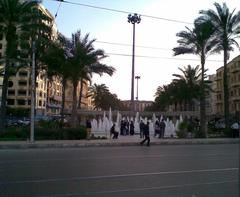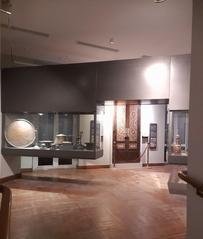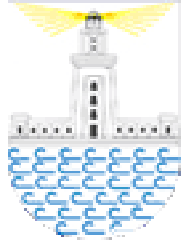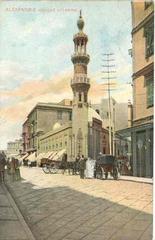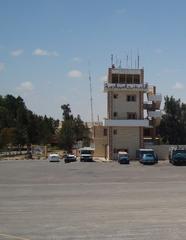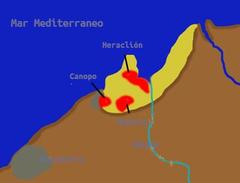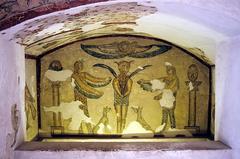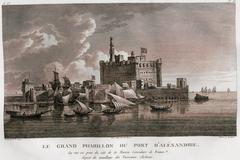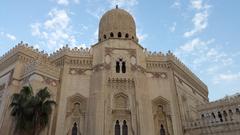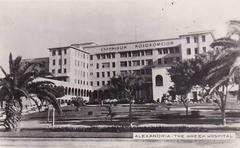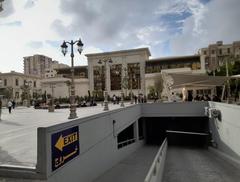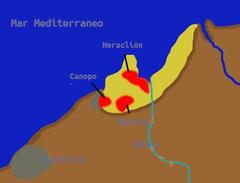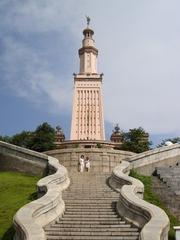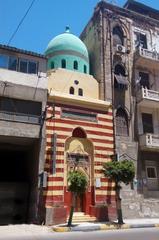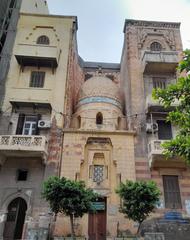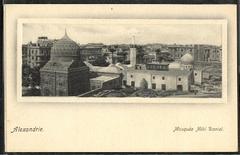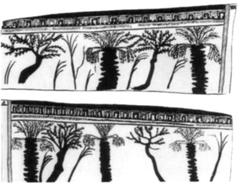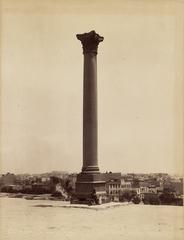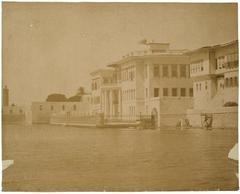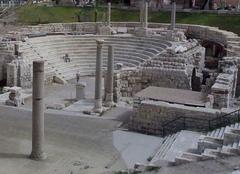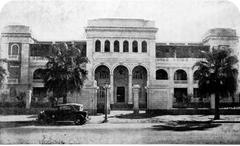Pompey’s Pillar & Pillar’s Cemeteries in Alexandria, Egypt: Visiting Hours, Tickets, and Historical Sites Guide
Date: 14/06/2025
Introduction
Pompey’s Pillar, standing proudly in Alexandria, is not only one of Egypt’s most impressive ancient monuments but also the centerpiece of a rich archaeological landscape that includes the Serapeum, sprawling necropolises, and historic cemeteries. Together, these sites reveal the multicultural history of Alexandria—once a vibrant crossroads of Egyptian, Greek, Roman, Jewish, Christian, and Muslim civilizations. This guide provides a comprehensive overview of Pompey’s Pillar and its neighboring cemeteries, including practical information on visiting hours, tickets, accessibility, travel tips, and the historical and cultural significance of the site.
Table of Contents
- Introduction: Why Visit Pompey’s Pillar and Its Surrounding Cemeteries?
- Visiting Information
- Historical and Cultural Background
- Exploring the Site
- Practical Visitor Tips
- Frequently Asked Questions (FAQ)
- Conclusion
- References and Further Reading
Why Visit Pompey’s Pillar and Pillar’s Cemeteries?
Pompey’s Pillar and the adjacent cemeteries offer a unique journey through Alexandria’s ancient and modern history. The towering red granite column, built in 297 CE to honor Roman Emperor Diocletian, is surrounded by remnants of the Serapeum temple and diverse burial grounds reflecting centuries of religious and cultural syncretism. Visitors can explore striking architecture, remarkable funerary art, and learn about Alexandria’s evolution as a cosmopolitan city (Pompey’s Pillar and Alexandria Cemeteries: Visiting Hours, Tickets & Historical Insights, Visiting Pompey’s Pillar and Pillar’s Cemeteries in Alexandria: History, Tickets, and Travel Tips).
Visiting Information
Hours and Tickets
- Opening Hours: Pompey’s Pillar and the archaeological park are generally open daily from 9:00 AM to 5:00 PM. Hours may vary during public holidays or Ramadan; check with the Alexandria Antiquities Authority or official tourism websites for updates.
- Tickets: The standard entry fee is 80 EGP for adults and 40 EGP for students (as of 2024–2025). Discounts apply for Egyptian residents. Tickets are sold at the entrance and cash in Egyptian pounds is recommended (Egypt Tours Portal).
- Additional Fees: Extra charges may apply for photography equipment and guided tours.
Accessibility
- Mobility: Main paths are paved, but some tombs and underground chambers have stairs and uneven surfaces, limiting accessibility for wheelchair users or those with mobility challenges.
- Facilities: Restrooms are available near the entrance. Shaded seating is limited; bring sun protection and water, especially during summer.
Travel Tips
- Getting There: Located in Alexandria’s Karmouz district, the site is easily reached by taxi, ride-hailing apps, local buses, or from the city’s main train stations. Google Maps provides accurate directions.
- Best Time to Visit: Early mornings or late afternoons (October–April) offer pleasant weather and fewer crowds.
- Dress Code: Modest attire is recommended. Comfortable, sturdy shoes are essential due to uneven terrain.
Guided Tours
- Licensed Egyptologists and local operators offer insightful guided tours, which can be booked online, through hotels, or at the site. Tours often include transportation and visits to nearby attractions. Audio guides and printed brochures are available from the city’s tourist office.
Historical and Cultural Background
The Serapeum and Pompey’s Pillar
The Serapeum was once Alexandria’s most important temple, dedicated to the Greco-Egyptian god Serapis and built to symbolize the city’s cultural fusion. Pompey’s Pillar, a 25-meter column of red Aswan granite, was erected in 297 CE to commemorate Diocletian’s relief of the city. Contrary to its name, it has no link to the Roman general Pompey—a misattribution from medieval times (luxorandaswan.com). The Serapeum complex also included subterranean galleries that may have stored overflow manuscripts from the Great Library of Alexandria (localguidetoegypt.com).
Necropolises and Catacombs
Near the Serapeum are extensive necropolises, most notably the Catacombs of Kom el Shoqafa. Dating to the 2nd century CE, these catacombs blend Egyptian, Greek, and Roman artistic motifs, illustrating Alexandria’s multicultural society. Originally a family tomb, the catacombs were expanded for communal burials, including horses (wideworldtrips.com). Artifacts like golden tongue amulets and coins have been discovered here, revealing beliefs about the afterlife (egyptholidaymakers.com).
Jewish, Christian, and Muslim Cemeteries
- Jewish Cemeteries: Alexandria’s historic Jewish community is memorialized in cemeteries at Mazarita and Chatby, with gravestones inscribed in Hebrew and oriented toward Jerusalem. Burials date back to the 19th century (archive.diarna.org, ijmsac.journals.ekb.eg).
- Christian and Muslim Cemeteries: The Chatby district contains Coptic, Armenian, and Greek Christian cemeteries, while the El Amoud Muslim cemetery remains active today (bibalex.org, greekcitytimes.com). Tomb architecture reflects religious identities and evolving funerary traditions.
Exploring the Site
Site Layout and Navigation
- Pompey’s Pillar: The centerpiece, standing 25 meters tall, with a Greek inscription dedicating it to Diocletian on its base.
- Serapeum Ruins: Remnants of the once-magnificent temple, including underground galleries and sphinx statues.
- Catacombs: Multi-level burial chambers with unique fusion art; the lowest level is now flooded.
- Cemetery Grounds: Spread around the archaeological park, featuring tombs from various communities and eras.
Wear sturdy footwear and bring a flashlight for dim underground areas. Allow 1–2 hours for a thorough visit.
Nearby Attractions and Itinerary Suggestions
Within walking distance or a short taxi ride, you can also visit:
- Catacombs of Kom el Shoqafa: Largest Roman burial site in Egypt.
- Roman Amphitheatre: Well-preserved remains of Alexandria’s Roman era.
- Alexandria National Museum: Artifacts spanning Pharaonic to modern times.
- Qaitbay Citadel: 15th-century fortress at the ancient Lighthouse site.
Combining these sites makes for a full day of historical exploration (Quit and Go Travel).
Photography and Special Events
Photography is permitted (fees may apply for cameras and tripods; drones require special permission). Climbing the pillar is strictly forbidden. Occasionally, cultural events or night tours are organized—check local listings for details.
Practical Visitor Tips
- Bring water, sunscreen, and a hat.
- Dress modestly and wear comfortable shoes.
- Carry small cash for entry and tips.
- Download offline maps or use Google Maps.
- Check opening hours around holidays and during Ramadan.
- Respect burial grounds and preservation guidelines.
- Avoid tap water and bring necessary medications for your visit.
Frequently Asked Questions (FAQ)
Q: What are Pompey’s Pillar visiting hours?
A: Usually 9:00 AM–5:00 PM daily. Hours may vary on holidays—confirm before visiting.
Q: How much are tickets?
A: 80 EGP for adults, 40 EGP for students; discounts for Egyptians.
Q: Is the site accessible for people with mobility issues?
A: Main paths are paved, but some sections (catacombs, galleries) have stairs and uneven ground.
Q: Are guided tours available?
A: Yes, bookable online, via hotels, or at the site.
Q: Can I climb Pompey’s Pillar?
A: No, climbing is strictly prohibited.
Q: Are the cemeteries open to the public?
A: Major historic cemeteries such as Kom el Shoqafa are open; others may have restricted access.
Conclusion
Pompey’s Pillar and the surrounding cemeteries are living chronicles of Alexandria’s remarkable journey from ancient metropolis to modern city. The site offers a unique opportunity to explore centuries of cultural, religious, and artistic fusion. With practical information on visiting hours, tickets, and travel tips, you are well-equipped to experience one of Egypt’s most valuable heritage landmarks. By respecting local customs and preservation efforts, your visit contributes to the ongoing stewardship of these treasures for generations to come.
References and Further Reading
- Pompey’s Pillar and Alexandria Cemeteries: Visiting Hours, Tickets & Historical Insights (2025)
- Visiting Pompey’s Pillar and Pillar’s Cemeteries in Alexandria: History, Tickets, and Travel Tips (2025)
- Pompey’s Pillar Visiting Hours, Tickets & Guide to Alexandria’s Historical Sites (2025)
- Pompey’s Pillar and Alexandria Cemeteries Project (2025)
For official updates and further information, visit the Egypt Ministry of Antiquities and Alexandria’s tourism offices.

